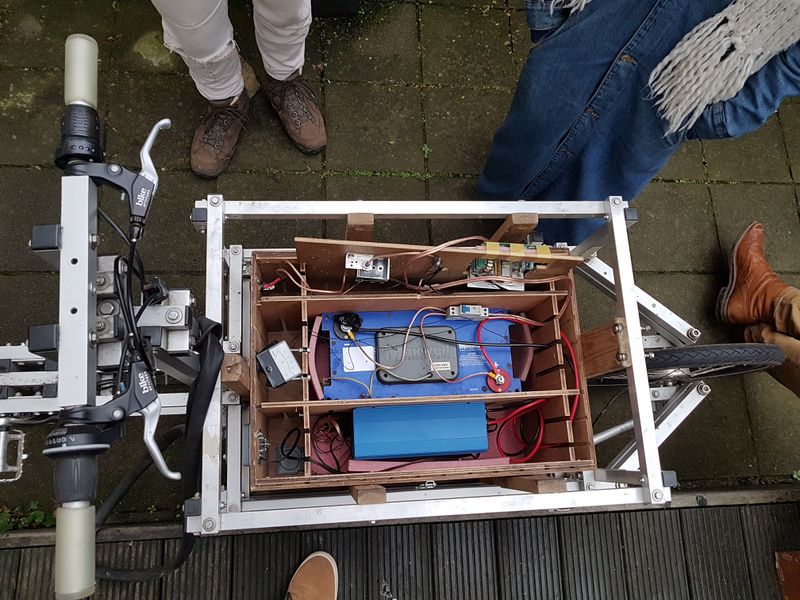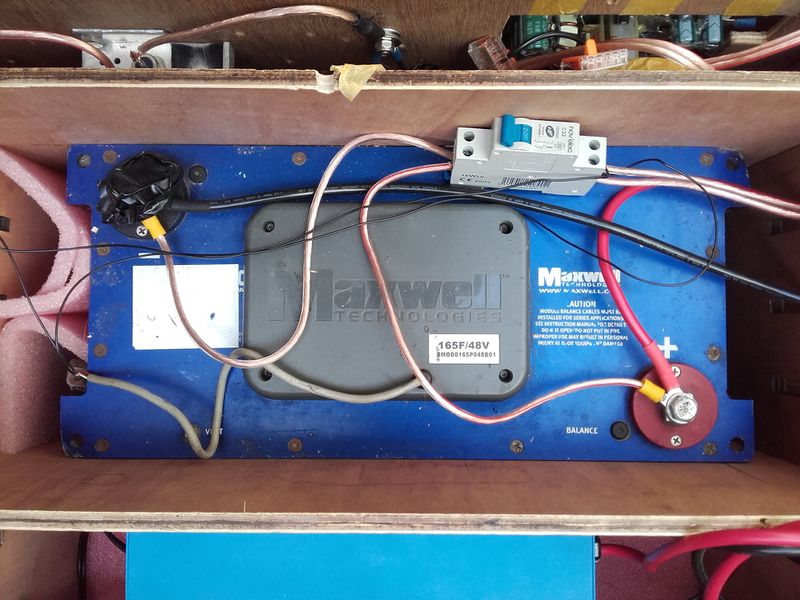There are 3 chapters,
The bike stand The electric conversion The energy moitoringTo find out more about the Vélo M² project and other project, visit www.velom2.be.
Introduction
The energy module is made specifically for the pedal power harvesting, we connect up to 6 bikes to the energy module. It has three functions : buffering the power, converting the DC power to AC power, monitoring the power production.
First the overview of the system. In words, we are harvesting the energy from stationary bikes. The energy is converted to regular AC power. We also monitor the energy flow wit the Open Energy Monitoring system. The bike stands we designed fit regular bikes. The bike wheel drives an electric motor with converts the mechanical energy into electric energy. The DC power is conducted through a diode and through a current sensor. Then the different cables are connected to the supercapacitor. This is the common point. From the supercapacitor we draw the power for the solar inverter that converts the fluctuating DC power to regular AC power. We monitor the power before the common point. An Arduino takes in the values of the current and voltage and transfers it to a Raspberry Pi that logs the data. An app on the smartphone allows to visualize the data.
Matériaux
- Supercapacitor (here 165F 48V)
- Inverter (here 800VA)
- Electric connections, switched and wires
- DC/DC converter
Outils
- Soldering iron
Étape 1 - Chose your buffer
You can chose between different buffering systems, an battery, a supercapacitor or a flywheel.
We chose a supercapacitor. A supercapacitor is an electronic component able to hold a charge. It can be used in the same function as batteries with the following differences :
+ a capacitor is easier to recycle than most batteries (references will follow).
+ a capacitor can provide and absorb a higher peak power.
– the voltage varies with the charging state of the capacitor (it needs an additional converter to provide the voltage of the system)
– the energy by weight capacity is less interesting than with batteries.
– the cost by energy is higher.
– the lifetime is quasi infinite (1M cycles).
The energy storage of a supercapacitor :
energy = 1/2 * C * voltage difference^2
http://www.engineeringtoolbox.com/capacitors-energy-power-d_1389.html
ex = 1/2 * 500F * (16-12)^2 = 4000J = 1.11Wh = 1 cyclist for 1min20sec
http://www.maxwell.com/products/ultracapacitors/16v-large-modules/documents
Draft


 Français
Français English
English Deutsch
Deutsch Español
Español Italiano
Italiano Português
Português